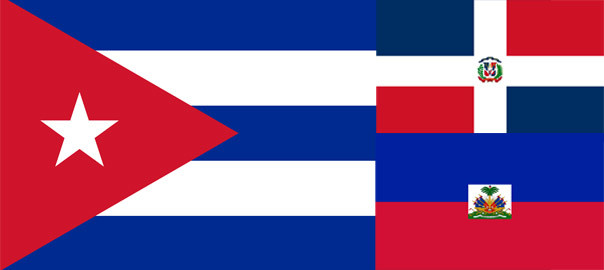Grand Caribbean: Cuba, the Dominican Republic and Haiti
Planning an itinerary through the largest islands of the Caribbean, Cuba, the Dominican Republic and Haiti.
With summer quickly approaching, a quick one and a half week trip to the Caribbean seemed like the perfect start.
A week ago, I purchased a multi city ticket arriving in Port-au-Prince, Haiti and departing from Santo Domingo, Dominican Republic. I planned a roundtrip flight to Cuba via Santo Domingo. This itinerary would allow me to visit country 71 to 73 and coincidentally the largest three Caribbean countries.
Haiti
Besides the devastating 7.0 magnitude earthquake of 2010, I didn’t know much about Haiti. After some further research I found that the first independent country in the Caribbean is also the poorest country in the Americas with illiteracy rates at around 50%. On the UN’s Human Development Index in 2010, Haiti ranked 145/182. The economy and infrastructure never fully recovered to this day.
But, there is hope. A new industrial park in the north of the island is creating 65,000 jobs and tourism to the island via cruise ships is boosting the economy. New luxury hotels in the capital, Port-au-Prince, have been opening since 2012.
Noting the US State Department’s travel warning of violent crime, murder and kidnapping (mostly in Port-au-Prince), I have planned a day to explore the capital and the upscale PettonVille. Unfortunately time will not allow for a visit to the UNESCO fortress to the north of the country.
I’m interested in witnessing the current state of the country and learning a bit about the Voodoo culture.
From Port-au-Prince, I booked a bus ticket to traverse the country and enter the Dominican Republic.
Dominican Republic
The second largest country in the Caribbean shares the island of Hispaniola with Haiti. The only other Caribbean island shared by two countries is Saint Martin. This diverse country holds the highest mountain, Pico Duarte, and the largest lake and lowest point, Lake Enriquillo, in the Caribbean.
Tainos were the inhabitants called “indians” by Colombus when he landed here in 1492 and the origins of Santo Domingo was the site of the first European settlement in the New World. Gaining independence from Spain in 1844, the Dominican Republic has had a tumultuous past.
Present day the country is the most visited destination of the Caribbean, due to beautiful beaches, lush mountains, luxury hotels, proper infrastructure, with tourism increasing in several areas of the island. The service sector, agriculture and mining are the largest contributions to GDP.
As a wealthier neighbor, the country has a problem with an influx of illegal immigrants from Haiti. Drug trafficking and crime is also a major problem.
With a couple of days planned to tour the country, I will be basing the travel from Santo Domingo. My touring schedule will be based on the availability of flights to Havana.
Cuba
I was always intrigued by the forbidden fruit of the Caribbean. With US sanctions on Cuba since 1962, the country remained a difficult destination to visit for Americans, though possible through special cultural exchange visas.
Cuba gained independence in 1902 and by 1958 it was an advanced Latin America country that had banned communism. However extensive labor union privileges eventually led to unemployment and unrest. Enter Fidel Castro and Che Guevara. After a successful revolution, Fidel’s new government legalized communism and seized agricultural lands. The new socialist state withstood an insurgency and a US backed invasion at the Bay of Pigs.
After an alliance with Russia, Castro backed several anti-imperialist wars in Africa, Central America and Asia. This makes Cuba unique as the only developing country to have exerted influence on the world stage, normally a trait of a major global power.
The regime’s policy of free education has boosted the country’s literacy rate to 99.8%, the tenth highest in the world, while the universal health care system has upped the life expectancy to 78.3 years, placing Cuba 37th in the world and ahead of the United States.
As with any communist country, media and travel is restricted and tightly controlled. Cuba ranks second in the number of imprisoned journalists right behind China. Internet is monitored and limited.
With Castro’s brother, Raúl Castro, in charge there are signs of change. As of 2013, Cubans are free to travel out of the country, there is a planned end to the dual currency system and intent on legalizing a property market for private land.
The largest country in the Caribbean with the third highest in international tourists was a fascinating destination.
I looked forward to exploring Havana and the rest of the island.
Follow along for the Grand Caribbean adventure!

Pingback: Port-au-Prince in a Day | World-Adventurer()
Pingback: Experience: Best Western Premier Petion-Ville | World-Adventurer()
Pingback: Experience: Crowne Plaza Santo Domingo | World-Adventurer()
Pingback: Capital Coach Line bus from Port-au-Prince to Santo Domingo | World-Adventurer()
Pingback: Experience: Sanctuary Cap Cana, Punta Cana | World-Adventurer()
Pingback: Havana, Cuba | World-Adventurer()